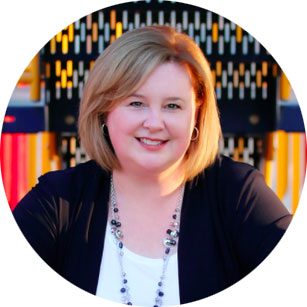Inclusive classrooms are not only classrooms that physically include students with special needs. They are classrooms where lessons and programs are also designed with learning needs and differences in mind.
Creating an inclusive curriculum means acknowledging that students learn in various ways, at different rates and have diverse interests. It means that different resources are brought together to allow students greater access to curriculum and more successful learning outcomes.
Here are some tips to help you design your inclusive language arts program.
Many kinds of books
An inclusive language arts program begins with recognizing that children learn to read at different rates and at different times. To support this reading development, a variety of books are available for the students to read during lessons and unstructured time.
These include books that are at different reading levels (from beginning reader to fluent reader), books that are fiction and non-fiction, illustrated and chapter books as well as books on tape. Scholastic has an extensive lists of leveled books that can be searched by genre, age, difficulty and interest.
Integrated technology
When possible, inclusive classrooms integrate technology into the language arts curriculum. This means that technology is not just used to demonstrate a new idea or skill (ie. watching a movie on a television monitor), but it is used to facilitate and support different learning styles (ie. a text to speech program for a student with learning disabilities).
Technology in the inclusive class is used as way for students to access learning materials and is an integral part of lesson planning. For more information on how technology in the inclusive classroom is used, have a look at this chart from Teachbytes :
| Using Technology | Technology Integration |
|---|---|
| Technology usage is random, arbitrary, and often an afterthought. | Technology usage is planned and purposeful |
| Technology is rare or sporadically used in the classroom. | Technology is a routine part of the classroom environment. |
| Technology is used purely for the sake of using technology. | Technology is used to support curricular goals and learning objectives. |
| Technology is used to instruct students on content. | Technology is used to engage students with content. |
| Technology is mostly being used by the instructor(s) | Technology is mostly being used by the student(s) |
| Focus is on simply using technologies. | Focus on using technologies to create to create and develop new thinking processes. |
| More instructional time is spent learning to use the technology. | More instructional time is spent using the technology to learn. |
| Technology is used to perform lower-order thinking tasks. | Technology is used to encourage higher-order thinking skills. |
| Technology is used solely by individuals working alone. | Technology is used to facilitate collaboration in and out of the classroom. |
| Technology is used to facilitate activities that are feasible or easier without technology. | Technology is used to facilitate activities that would otherwise be difficult or impossible. |
| Technology is used to deliver information. | Technology is used to construct and build knowledge. |
| Technology is peripheral to the learning activity. | Technology is essential to the learning activity. |
Graphic organizers galore
A graphic organizer is a visual tool that is used to organize ideas, express knowledge, create relationships and allow users to communicate. Taking information out of text and putting it into graphic organizers allows learners to actively work with concepts for greater understanding.
Graphic organizers can not only be used by students to respond to new ideas but also for teachers who want to deliver lessons in more visual ways. Finally, graphic organizers can be used for not only a language arts program but for other subject areas as well.
For a comprehensive bank of graphic organizers, check out the Education Place .
Tons of basic classroom tools
As an inclusive educator, I have more highlighters, pencils, markers, overlays and different types of paper than an office supply store. In addition to graphic organizers, students can use a variety of tools to help them organize and understand ideas.
For example, rulers can be used to help students stay on track while reading text. Colored highlighters can be used to find main ideas in text and colored overlays can improve the ability to see words.
Voice their choice
Allowing students to have choice in what and how they read, facilitates more enthusiasm and engagement in learning. Students can be given the opportunity to choose their own books for not only personal enjoyment but for curriculum as well. They can be given choice in how they show their understanding of the book or even how they share the book with others. There can also be choice in the reading strategies that the student uses to understand text.
If you are looking to create a more student-centered approach to reading and writing, this is an excellent video that explains how a student-driven language arts program can improve reading skills.
Learner Centered Literacy: Owning Their Own Reading
Elm Street Elementary School, RSU 16, Mechanic Falls, Maine (Maine Department of Education Center for Best Practice).
Nicole Eredics is an educator who specializes in the inclusion of students with disabilities in the general education classroom. She draws upon her years of experience as a full inclusion teacher to write, speak, and consult on the topic of inclusive education to various national and international organizations. She specializes in giving practical and easy-to-use solutions for inclusion. Nicole is creator of The Inclusive Class blog and author of a new guidebook for teachers and parents called, Inclusion in Action: Practical Strategies to Modify Your Curriculum . For more information about Nicole and all her work, visit her website .

